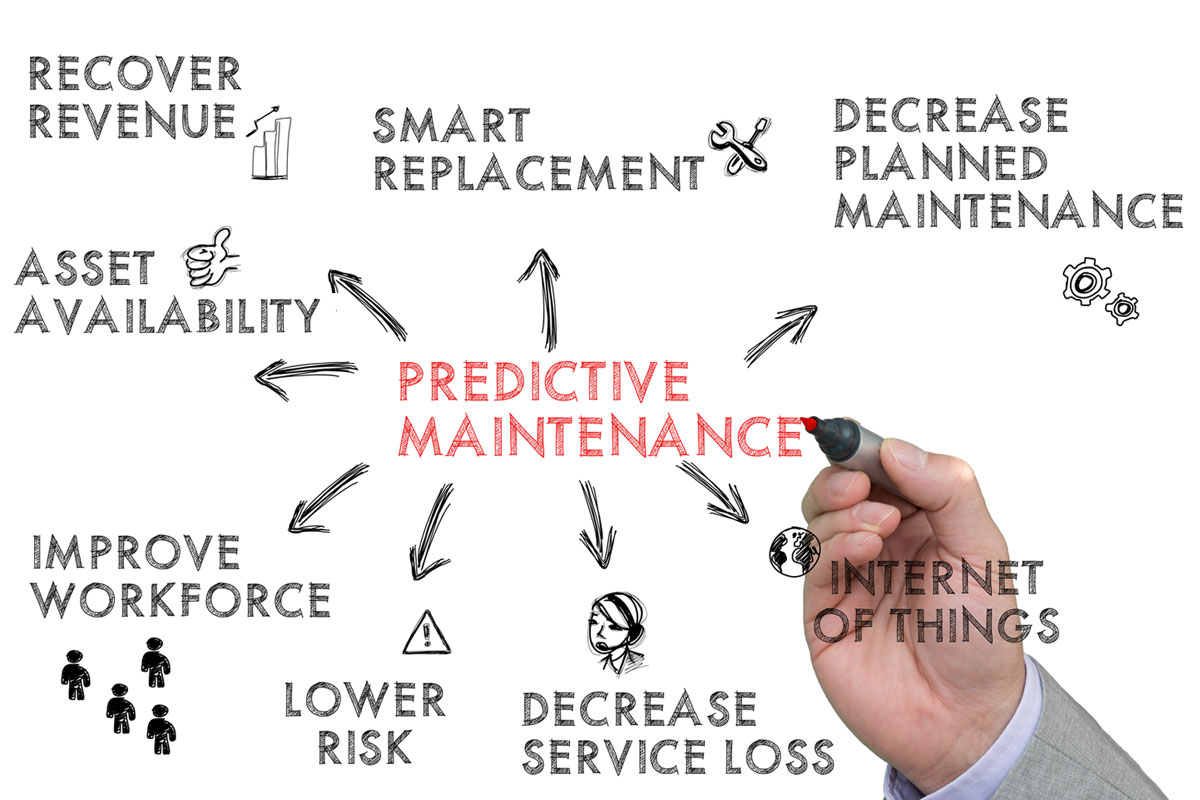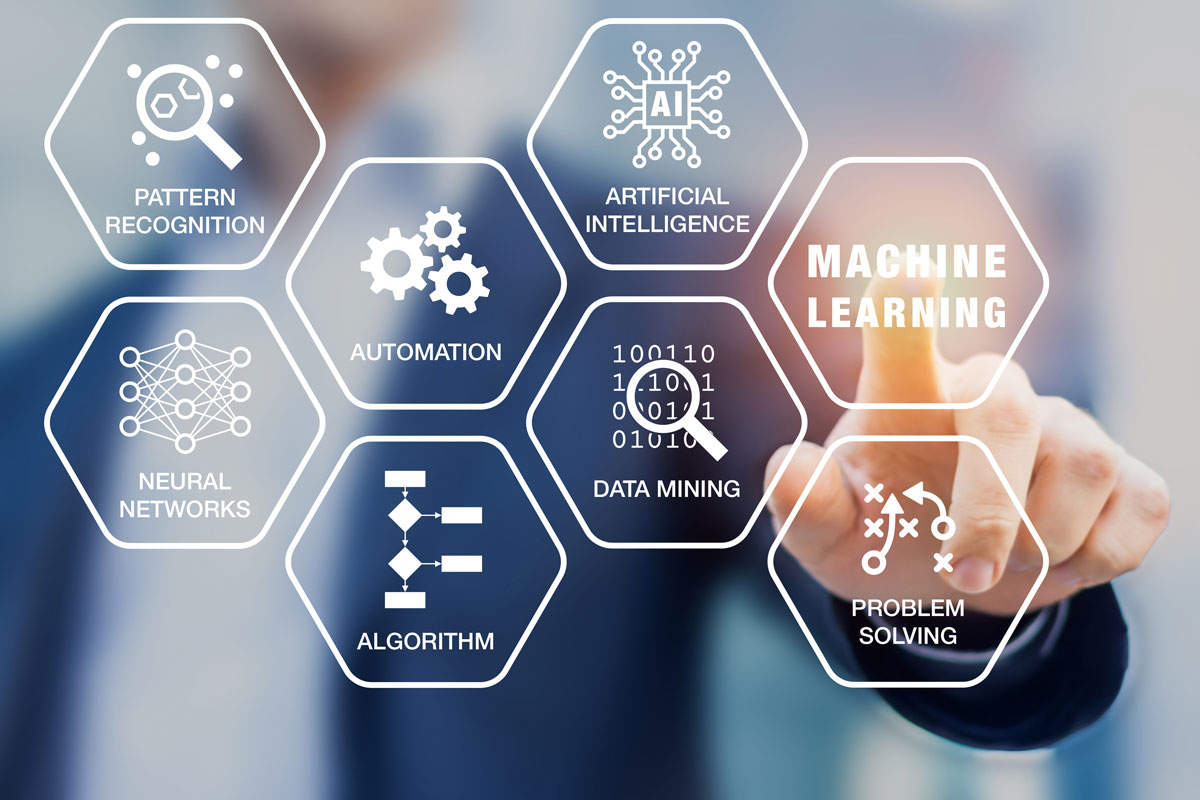
AI is changing numerous industries, including healthcare and agriculture. AI also enhances predictive maintenance, a type of preventive maintenance that monitors systems and provides information-backed guidance on service and repairs.
With AI-powered predictive maintenance, companies can become more productive, efficient, less wasteful, and more successful.
What Is Predictive Maintenance?
Predictive maintenance uses advanced technology and software to continually analyze the conditions of machines and equipment. The process collects data at multiple points to build detailed models to accurately predict equipment status. Data produced during a machine’s normal operation creates highly accurate maintenance recommendations. Data collected during operations helps reduce the probability of failure and creates a rich understanding of the causes of asset failure.
It helps to distinguish predictive maintenance from preventive maintenance. While they are similar, there are important characteristics for each type. Preventive maintenance involves the general care of equipment without knowing specifics on how that equipment was used. Changing the oil in a car at specific, predetermined intervals is a type of preventive maintenance; it’s done exactly when a vehicle reaches a certain mileage or when a certain time elapses. Predictive maintenance would go further if used in a vehicle, monitoring factors like oil viscosity, engine temperature, or fluid levels to determine when an oil change is necessary.
Predictive maintenance can significantly impact a company’s operational efficiency and bottom line. Numerous stats support predictive maintenance.1 Information from McKinsey states that predictive technology can reduce maintenance costs by as much as 40%. Deloitte has found that predictive maintenance can lead to 75% fewer breakdowns in equipment, greatly enhancing overall productivity.
Predictive maintenance is becoming an essential tool in maintaining efficiency and productivity. Through the use of AI, it’s becoming even more effective.
How Is AI Used in Machine Learning?
AI can apply machine learning to solve a variety of service-related problems. It can automate and build analytic models that assist maintenance and repair technicians, allowing them to prevent downtime by fixing issues before they even occur.
AI is made to replicate human intelligence on specific jobs and tasks. In turn, this allows the task to be completed automatically. However, two components are needed for this technology to function properly: data and algorithms. Specifically, predictive maintenance needs data from the equipment and algorithms to analyze and leverage this information.
What Is Machine Learning?
Machine learning is easily confused with AI, but they are slightly different concepts. Machine learning is actually a subset of AI; it uses algorithms to understand databases. Essentially, it uses these databases to learn and build insight. Users can feed data into machine learning systems and build models. Eventually, these models become so familiar that they can identify inefficiencies and suggest ways to improve accuracy.
Machine learning consists of supervised and unsupervised learning. With supervised learning, the machine learns to act on new input with a specifically-defined action while leveraging large data sets. With unsupervised machine learning, the algorithms find unlabeled information to identify patterns.

How to Implement a Machine Learning Model for Predictive Maintenance
To implement machine learning into a predictive maintenance platform, you must first frame the problem or problems you want to address.2 When thinking about the problems, ask yourself various important questions. These may include:
- What is the desired output?
- Is there enough data currently available to feed into the machine learning system?
- Are all events properly labeled and identified?
- How long will the model need to operate so that it can start identifying potential failure?
Once you have this information, you can choose the best strategy for your specific needs. Many modeling strategies for predictive maintenance include regression models, classification models, flagging anomalous behavior, and more. Each has its uses, so asking the appropriate questions can direct your decision.
What’s the most suitable approach for your operations? The best way to implement the appropriate model is to identify what types of failures you are trying to model and then determine the data you need to model those failures.
The Benefits of Using AI-Powered Predictive Maintenance
There are numerous reasons why managers and owners should consider AI-powered predictive maintenance.
- Lower production losses: Information available states that AI-powered predictive maintenance can reduce downtime by 30%. It can also create 83% faster service resolutions and reduce time on site by 75%.
- Increase worker productivity: Managers can plan equipment services around worker schedules by predicting when and where maintenance is needed.
- Improve worker safety: Service technicians are often placed in hazardous situations when repairing equipment. By predicting when a piece of equipment may break down, there are fewer situations where dangerous repairs are needed.
- Plan around downtime: Equipment downtime and disruptions can harm a company’s productivity. With predictive maintenance, managers can plan around downtime and make their total operation more efficient.
- Enhance customer service: Original equipment manufacturers, or “OEMs,” can leverage predictive maintenance to enhance their services. They can provide predictive maintenance as a service, and this service can be based on models using data from individual customers.
This is just a short list of the many benefits of AI-powered predictive maintenance. For more information on predictive maintenance and machine learning, contact Ambiq® today.
Sources
1 The Most Surprising Predictive Maintenance Industry Statistics in 2023
2 Machine learning for predictive maintenance: where to start? | August 29, 2017


